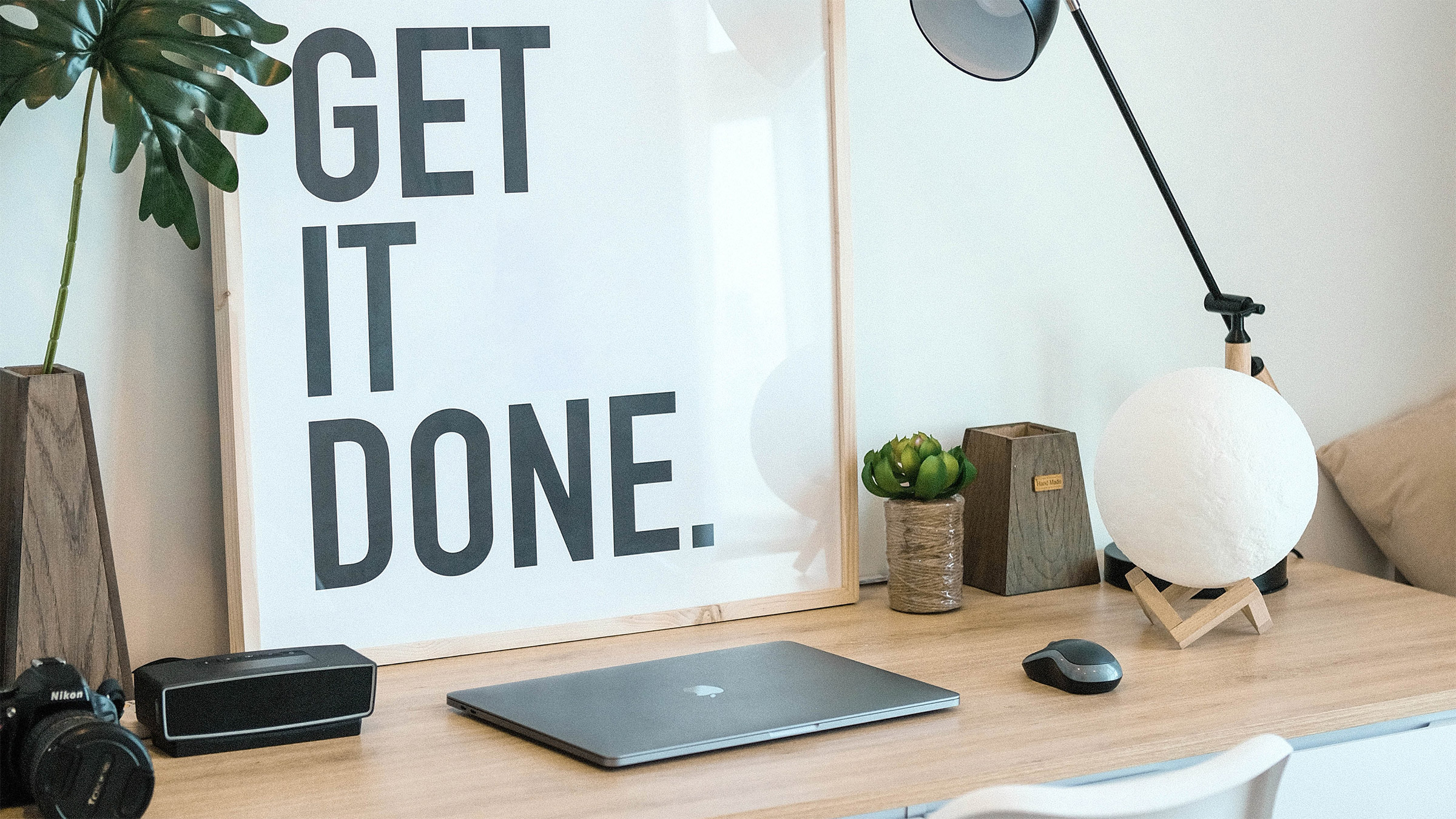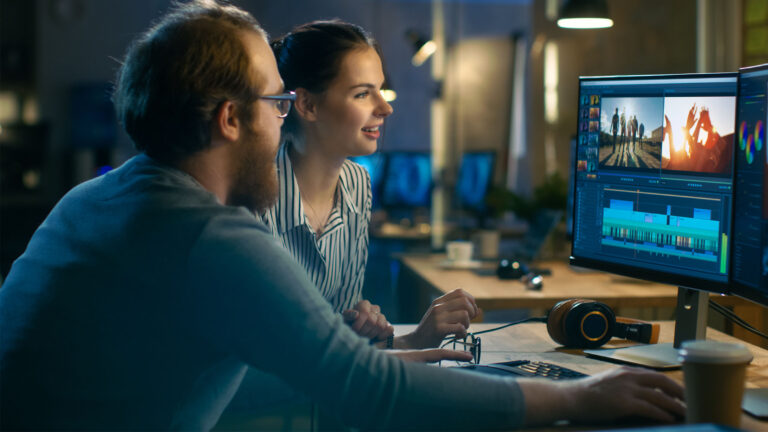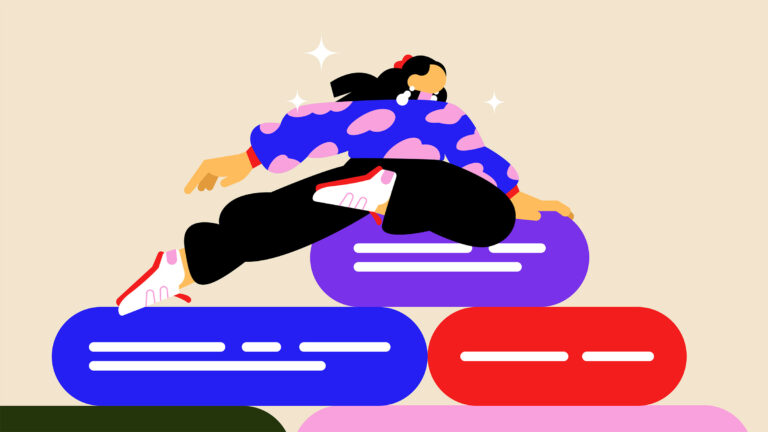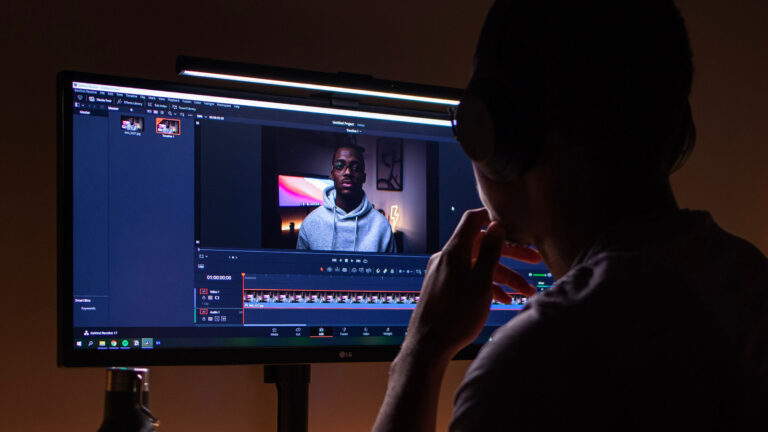At one point or another, most of us in this business have felt personal pressure to avoid becoming a “starving artist.”
Mark Toia’s experience is all too familiar, where family, friends, and mentors remind young artists that “Art doesn’t pay,” in a loving attempt to save them from perpetual economic pain.
But as much as video pros like to avoid the “starving artist” label, the pandemic drew many of us uncomfortably close through no fault of our own. Twelve months on and many of our production schedules are still thin, with client work scarce and less profitable than we’re used to. Of course, we didn’t starve for art’s sake. We cancelled productions and shifted entire projects to do our part in support of a common cause.
Now that there’s a flicker of light at the end of the tunnel, some may be tempted to rush back into work in search of the pre-pandemic normal. But you need to be careful. Unless you take time to adjust to the new normal and reflect on everything we’ve learned in the last year, you’re in danger of making the situation worse for your creative and professional career.
In today’s article, we’ll explore 7 key lessons to help video creators thrive in times of uncertainty, and develop a healthy, sustainable, and resilient creative life without becoming a starving artist.
#1 Embrace creative constraints
2020 was certainly not a great year for creative liberation. Or at least not as you might think of it.
Rather, we found ourselves under previously-unimaginable constraints. Many productions were cancelled, and those that weren’t had to rapidly get used to entire new ways of working. But for all the hassle these limitations created, we need to recognize the tremendous technical innovation and creative inspiration that has resulted.
As creatives we often idolize total creative freedom. You might think that means eliminating all creative limitations by having the biggest budgets, the greatest gear, and the most spectacular studio spaces. Certainly, none of these are bad things.
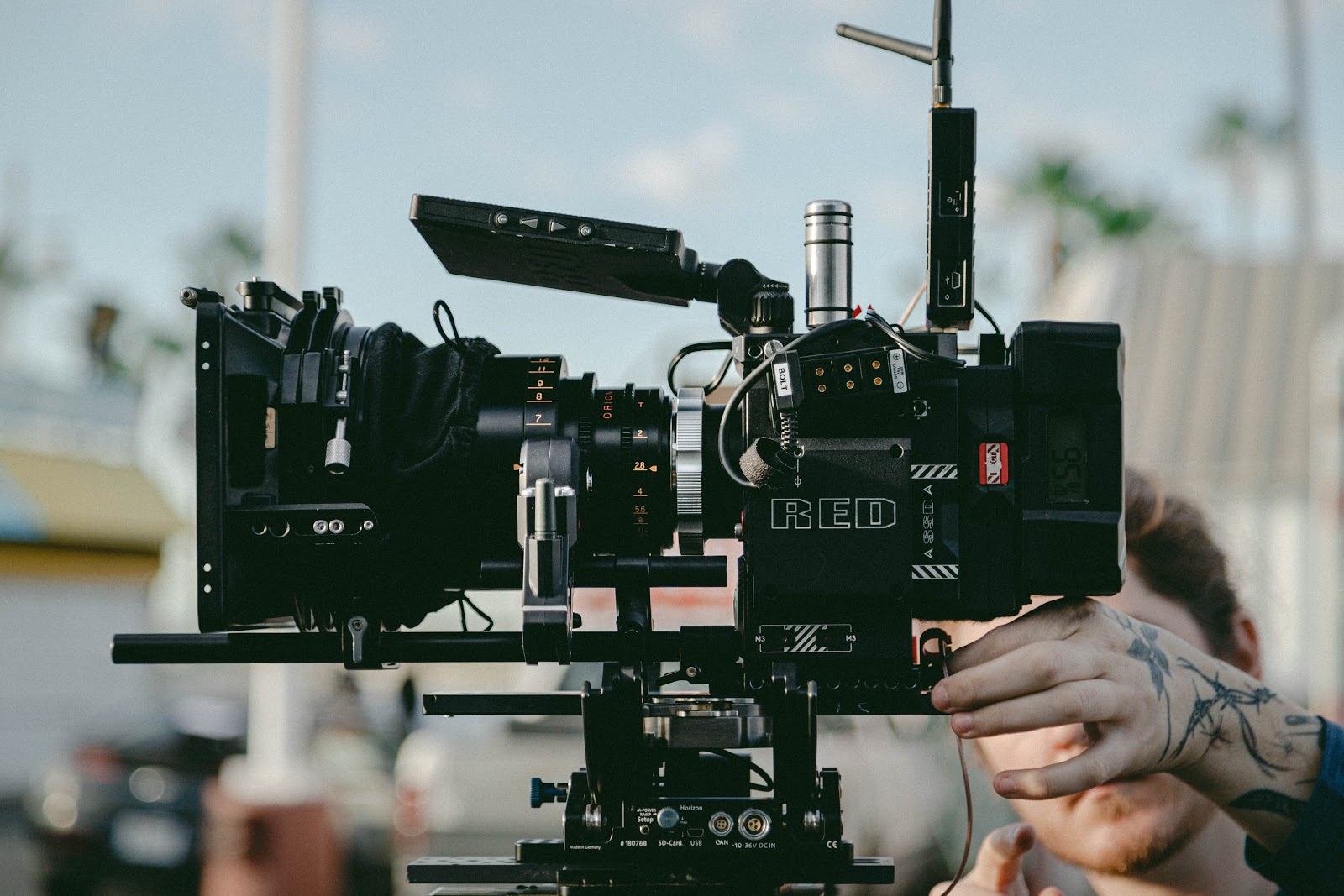
But it’s important to realize that, while our tools and resources empower us to create, they also might be slowing us down.
It’s not that a new camera or upgraded workstation will be slower than the tools we had before, but the need to choose between the available tools can be a speedbump to our creative productivity. After all, how much time do you spend reading up on the latest tech, comparing gear, and watching reviews? That’s time that could be used to create.
This phenomenon is called the “Paradox of Choice.” Simply put, the more choices you have to choose from, the harder it is to make a decision and the more time it takes.
But if you learn to live with the right kinds of constraints, it will help sharpen your skills and guide your creative energy. If anything, it will force you to think more imaginatively to solve creative problems.
When we’re forced to create more with less, we push against the boundaries of what’s possible, which helps us become leaner, smarter, and more resourceful. This can drive us to create better work than we would have with far more resources at our disposal.
So even when we regain our full creative freedom, and we all get back to work, we should remember to use creative constraints to our advantage. Because often it’s these constraints that help us grow and adapt to what comes next.
#2 Ask for help
One positive aspect of the past year is that we now all have ample justification to ask others for help.
Simultaneously, the entire creative industry was thrust into a new environment. Along with this came a lot of shared challenges which took collaboration to solve. If we wanted to keep the doors open, we needed each others’ help.

But beyond mere survival, there are some really practical reasons to ask for help, not only for you as an individual creator, but for the entire filmmaking community.
Video creators, like other artists, depend on healthy collaboration to succeed. If you’ve ever been on a film set, even for a short while, you know how much each person uses their unique gifts and experience to help realize a larger creative goal. For feature films to even be possible, filmmakers have to help one another.
But that sort of cooperation and mutual help also feels pretty good, and builds strong relationships that enable even more creativity.
For example, if you ask someone for help building a remote workflow from the ground up (like we all did recently), then you’re inviting them into a shared creative and technical challenge. It’s not necessarily an inconvenience or burden to the person who was asked for help. Studies have shown this sort of cooperation builds a positive relationship between the person who asked for help and the person who helps.
So if you’re the one asking for help, you’re inviting someone to experience the joy of helping, and sharing in creative cooperation. That means you’re getting the help you need, while also strengthening your relationship. It’s a win-win!
Of course, we should all be careful to avoid taking advantage of someone else unfairly. When you ask for help, be humble, honest, respectful, and be willing to offer help in return.
As we all return to work, it’s true we might not actually need each others’ help in the same ways. But making an effort to include others by asking for their help will form stronger creative connections, which we always need.
# 3 Teach others
Sometimes pursuing a creative goal can feel like wading through waist-high mud.
You might spend hours lying on the couch, waiting for the right idea to come along, or give pitch after pitch for weeks to land a project. To add to these normal difficulties, the pandemic brought a fresh slurry of mud that slowed everyone’s progress and in many cases brought things to a standstill.
So what do you do when there’s no clear way forward? One option is to turn around, retrace your tracks, and see if there are others who need a guide.
Teaching and guiding other creators provides a unique opportunity to reflect on technical or creative challenges and learn even more from them. By leading others through difficult filmmaking concepts or problems, we’re forced to deepen our understanding of the craft. There are few better ways to learn something than being forced to teach it.
It’s not complicated. When you’re teaching someone, they’re likely to ask you a question that forces you to think about the topic from a new perspective. Over time, these questions and new perspectives will expand how you think about the topic, which will help you understand it better.
For example, over the past year I started teaching VFX concepts on YouTube. In a recent tutorial, I show how to add VFX to RAW footage using the ACES color pipeline. Creating this tutorial took a month of learning, testing, and research.
Before I started creating tutorials, I’d have to re-learn concepts like this over and over again. But when I was forced to wrestle with the concept for that long, not only did I develop deep understanding but also long-term retention. On top of this, it’s been rewarding to see other artists learn and add valuable feedback.
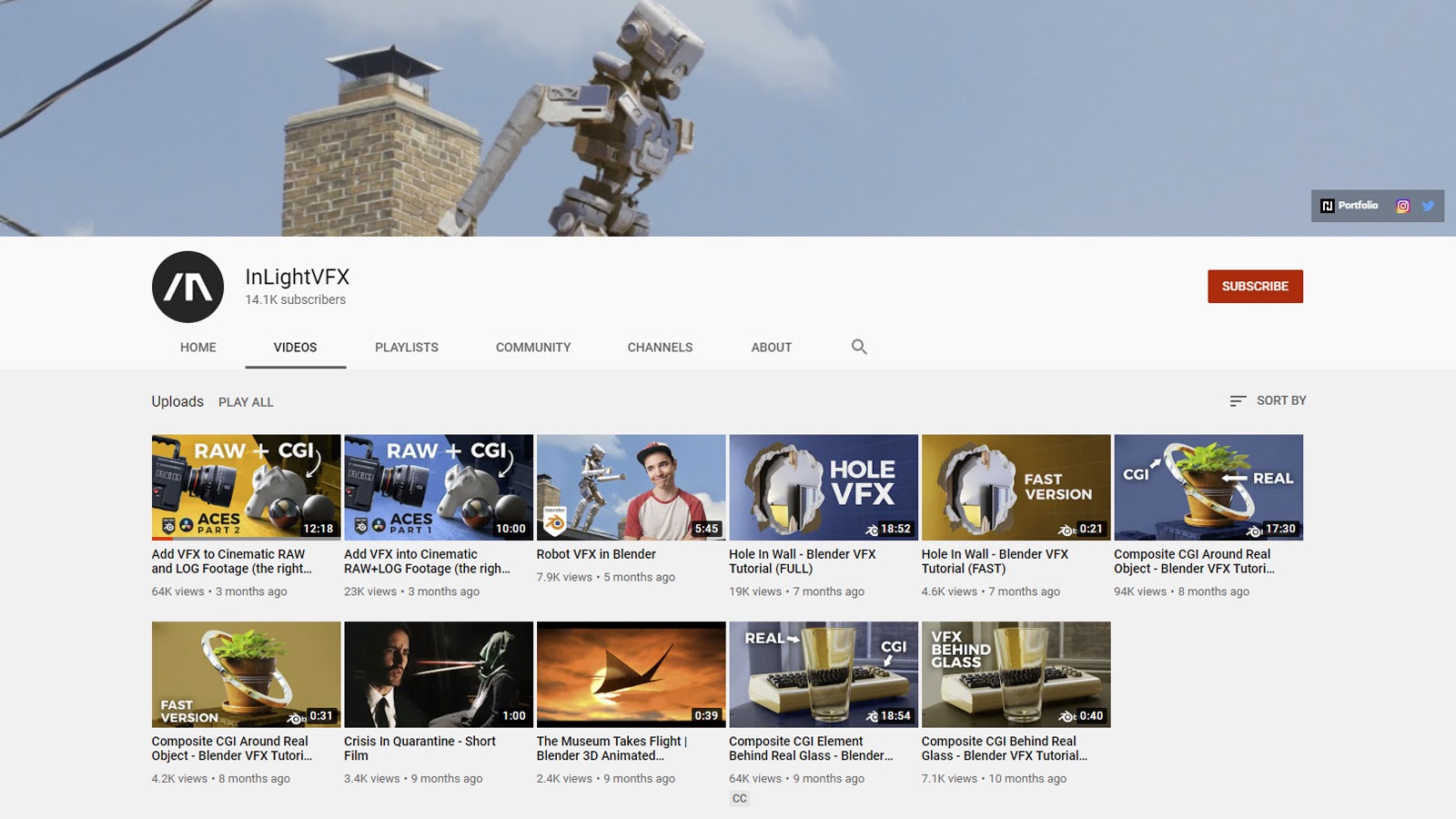
Of course, you can find eager learners almost anywhere and at every tier of the industry. And beyond creating online tutorials, there are countless ways to teach. Perhaps you can participate in an online forum or collaborate 1:1 with another artist. Wherever you find someone willing to learn, you’ll be surprised how much teaching helps you learn as well.
Of course, it will be easy to get caught up in work as productions start to fill our schedules again, so you might be tempted to stop teaching once that happens. But consider dedicating at least some time to teaching others in your field. It will make you feel great, build solid relationships, and further sharpen your skills
#4 Learn to fail freely
If there’s one thing the pandemic provided, it was the perfect excuse for failure. And that excuse sets us free to fail.
This freedom to fail is actually empowering. It lets us take creative risks, start something from nothing, and try our hand at creating something unique. But when we go back to business-as-usual, is there a way we can preserve this freeing feeling?
As Cullen Kelly says in his 5 tips to develop creative style, “sticking with what works is part of what keeps us in business, but it can also easily lead to creative stagnation.” The solution is to learn to fail freely.
So what’s that mean? The first step is being open and honest about your failure. Share your failings, in sufficient detail, with others. That might seem scary, but it can be hugely beneficial.

When you share your failures with someone in this business, I guarantee they will have a similar story. But unless you open up about your failures, you’d never know that. Our failings are not so unique. That’s right, your failures aren’t so special! And when we begin to accept this, each failure has a little less weight and is a little less overbearing on your identity.
Next, when we share our failure, it will encourage others to do the same. Someone I’ve admired for this lately is Hollywood Director David F. Sandberg. He’s been very open about the challenges of being an introvert in the land of big personalities and hot egos.
In sharing his challenges and failures, David shows us his very human struggles and allows us to relate and empathize. If more of us in this industry can open up like this, we can create a healthier creative environment for us all.
Pandemic or not, we will always need to be ready to react to and accept failure. And if we can learn to fail freely when things are normal, we will be all the more prepared to persevere through the worst.
#5 Tame your expenses
For many in creative fields, the goal of predictable financial stability is often challenged by the reality that creating art is expensive.
Software licenses, production gear, talent, permits, rights, and so many more things are all necessary costs of doing this business. And it all adds up, fast.
But as work begins to pick back up, and your revenue improves, take a moment to think about which things you actually need to be spending money on. Because unnecessary expenses can hurt your creativity as much as your profit.
Tom Rothman, the chairman of Sony Pictures, says that being fiscally responsible allows creative teams to be creatively reckless. To see this philosophy in action, just take a look at the success of Pixar, a company founded on reckless creativity.
In his book “Creativity Inc.”, Pixar’s former President Ed Catmull describes how every Pixar film starts with an “Ugly Baby” idea. These ideas are always under threat of the always-hungry financial machine that he calls “The Beast” (Pixar’s operating expenses). One key to Pixar’s success has been to tame The Beast through careful financial planning. This protects Ugly Baby ideas and gives them a chance to grow into iconic, highly profitable films.
In the past year, companies in the creative industry have discovered new ways to tame The Beast and save money. One key benefit has been remote workflow technology. For the studios that were rapidly transitioned to working remotely, the benefits of lower facility costs and increased productivity have been equally quick to develop.
In addition, remote cloud-computing has removed the burden of managing on-site equipment, allowing studios to easily scale their computing resources and pay only for what they use. These savings quickly add up and allow studios to operate from a position of greater financial stability and creative confidence.
The pandemic certainly made us all aware of the importance of saving to protect against unpredictable events. But even in times of plenty, we should remember the importance of optimizing our resources to nurture creative ideas, instead of wasting them.
#6 Make art for work and life
There are very real challenges to trying to make a living in this business. And some will not be able to overcome these challenges.
Yes, art and filmmaking can pay and have made a lot of people a lot of money. However, for many people, art doesn’t pay enough. But that’s not always a bad thing if your goal is to create art. Because in the balance of work and life, we can still flourish as artists even without art being our profession.
Artist and writer Austin Kleon encourages us to ask, “Instead of making a living doing what you love, what can you do for a living that means you get to spend the most quality time doing what you like?”
Perhaps the most exciting aspect of this approach to creating art is the freedom to pursue creatively reckless projects without worrying about who they will profit or please. Creative work made in this spirit is oftentimes what stands out the most, because it can be so unique and unfiltered. Furthermore, passion projects can turn into profitable work over time. So just because you can’t make money from your art now doesn’t mean you should stop, or that you won’t be able to make money from it one day.
Instead of making a living doing what you love, what can you do for a living that means you get to spend the most quality time doing what you like?
The important thing to remember is that you don’t have to choose between making art or making a living. Rather, diversifying how and why you create art is both possible and beneficial.
As the past decade has shown us, creative professionals benefit tremendously by diversifying their skills and developing multiple professions. As artists and storytellers, this kind of diversity makes us more well-rounded and able to communicate a wider range of human experiences, emotions, and perspectives.
Writers often give the advice to “write what you know.” This advice applies to video creators too. “Create what you know.” The broader your knowledge and experience, the more uniquely you’ll be able to develop your art, whether it’s your full-time job or not.
#7 Ease back to normal
Before you rush off to apply the above lessons, here’s one more to take to heart: don’t overdo it.
In 1945, scientists conducted an experiment to determine how best to treat the effects of acute starvation. Turns out, the healthiest option was not to give the subjects a full buffet and tell them to eat their fill. That might have killed them. Instead, they found the safest, most beneficial path to recovery was a slow, gradual return to a normal diet.
Despite our intense hunger for normalcy, we might also adopt a similarly gradual approach to going back to how things were. Rather than returning to a 40+ hour week in the studio all at once, it would be better to consider a slow transition that balances the realities of office work and the needs of home life.

Or perhaps when opportunities for revenue become more plentiful again, we take the time to reconsider what kinds of projects we want to work on, rather than accepting anything that comes our way. Sometimes we will and should take any work we have the opportunity to do, but every opportunity has a cost. You don’t want to risk becoming bored, discouraged, and burned out cutting mundane corporate video, and lose your creative passion in the process.
It would be a shame for us all to return to exactly how things were without remembering some of the blessings of the last year. As we navigate our path back into work, let’s be smart and intentional about the transition.
If we do it right, we might just come out of this stronger than when we started.
Going forward
As it turns out, we’re all starving artists in one way or another.
Ignoring economic circumstances, we will always hunger for something. A new story, a visual experience, a feeling. That’s the very creative passion that drives us forward.
So instead of asking “how can I avoid becoming a starving artist,” ask “how can I become a thriving artist.” Let’s acknowledge this hunger and learn to enjoy the pursuit of its satisfaction. These 7 steps will help you find ways to savor every day, and be better prepared to make the most of every creative season you go through.

